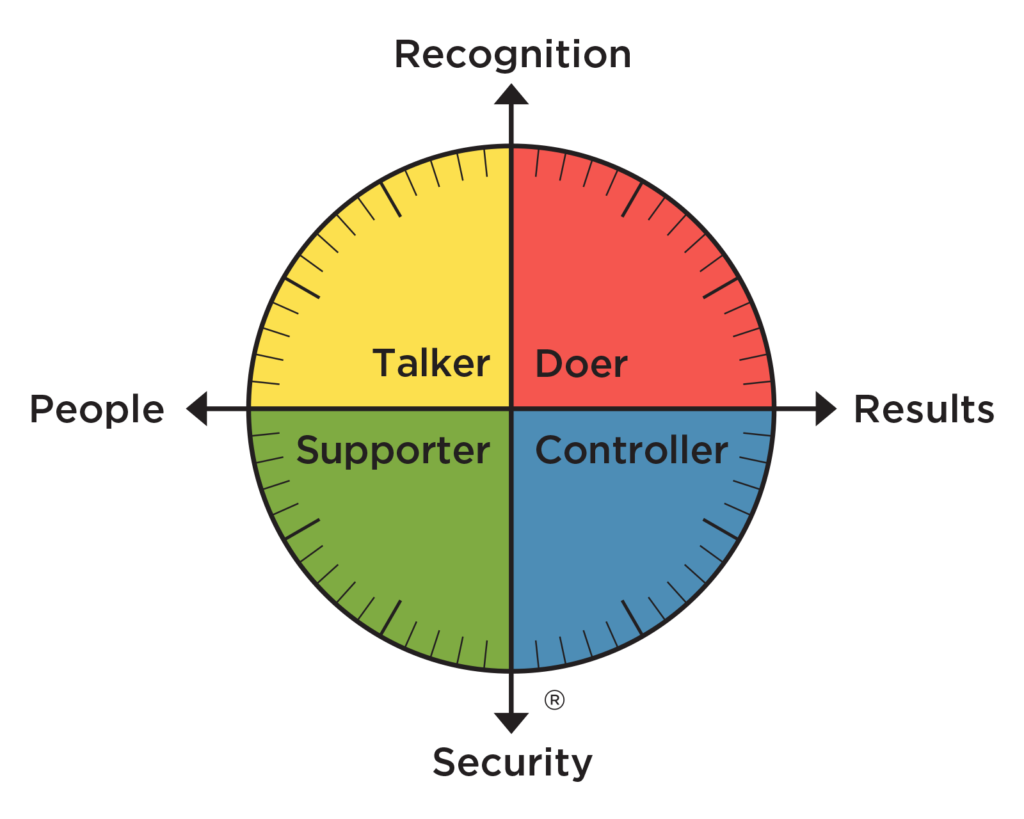Coaching People to Be Like You? Here’s Why That’s a Big Mistake

No two coaching conversations should be alike—because no two people are alike
Here’s a scenario that might sound familiar: You have great coaching conversations with some of your sales reps. When you ask about the results they’re celebrating, they can’t wait to list them all out. You focus in on what they need to do next and what outcomes they need to achieve, and then you quickly move into action steps and goals to take them to the next level. The reps makes some quick decisions—even cutting you off before you can finish!—and leave fired up and ready to go rack up some more wins.
The very next day, you meet with other sales reps with similar track records and performance history. But even though you follow the same coaching approach, the experience couldn’t be more different. The person seems defensive when you ask about their big wins for the week, like you’re trying to catch their mistakes. When you move into a discussion of next steps and goals, they’re hesitant to make any changes or commit to the timeframe. Most of all, they’re worried about how any new plans might affect their client relationships. They don’t seem fired up; instead, they want to go back over everything again, step by step.
How can some coaching conversations, where everything seemed the same on paper, turn out so differently in practice?
One Size Doesn’t Fit All
One of the challenges managers who are new to coaching quickly discover is that no two coaching conversations are alike—because no two people are alike. What one person is motivated by and seeks out may be totally different from another. And what is energizing and inspiring to one person may completely exhaust or irritate someone else.
In many ways, managers often end up “coaching in their own image,” assuming that what works for them works for everyone else, too. So, if they’re goal-driven and like structure and control, their coaching style will reflect that. And this works great—for those employees who behave in the same ways. For those who don’t, it’s an entirely different story.
These differences are often the result of different Behavior Styles, which are based on patterns of external, observable behaviors.
The most effective coaches know what their own style is and, most importantly, focus on how they need to adapt to meet the needs of different people on their team. Once you know what you’re looking for, it becomes much easier to “read” people and understand how they approach their work, what makes them feel valued and what motivates or resonates best with them.
Coaching by Behavior Style
Let’s take a closer look at the four different Behavior Styles — Doer, Talker, Controller and Supporter — and how managers can use this information to adapt their approach to get the most from each coaching engagement and dramatically improve their overall coaching effectiveness.

Doers (Direct and Guarded) are take-charge people who are known to be:
- Decisive risk-takers
- Competitive
- Fearless — no obstacle is too big to overcome
- Ensure bottom-line results
Tips for Coaching Doers:
- Help them set challenging goals and let them take the lead, when appropriate, within defined parameters.
- Vary their routine to keep them engaged.
- Manage their tendency toward conflict by backing up statements with facts.
- Compliment them on accomplishments and willingness to take risks.
Talkers (Direct and Open) are optimistic, intuitive, creative people who:
- Inspire others to take action
- Think fast on their feet and are optimistic, intuitive, creative
- Can be impulsive in trying new ideas
- Promote ideas, opportunities or people
Tips for Coaching Talkers:
- Support their ideas and encourage their optimism.
- Show your genuine appreciation for their progress and accomplishments.
- Avoid too many details and focus on the “big picture” when setting goals with them.
- Help them prioritize, organize and see tasks through to completion.
- Create a relaxed, friendly environment.
Controllers (Indirect and Guarded) are detail-oriented and function best when they can:
- Organize carefully and thoroughly
- Follow rules, regulations, procedures to the letter
- Reserve opinions until fully researched
- Plan to meet specific expectations
Tips for Coaching Controllers:
- Approach them in an indirect, nonthreatening way.
- Provide explanations and rationale when assigning new tasks or implementing procedures.
- Allow them to think, ask questions and mentally process before they make decisions.
- To minimize conflict, tactfully ask for clarification and insight from them. Share with them the “why” and “how” of decisions you make.
Supporters (Indirect and Open) bring a sense of calm to others. They:
- Bring harmony to group situations
- Listen and display friendliness and sensitivity
- Network and build friendships to help do work
- Coordinate and cooperate with others
Tips for Coaching Supporters:
- Minimize risks for them. When you show reasoning, proof and data, they more willingly accept concepts, ideas and change.
- Recognize that they’re most engaged when serving and supporting others.
- When giving instructions, outline them in numbered steps.
- They will appreciate your personal involvement in thoroughly explaining your expectations.
- Give them personal assurance when changes occur.
- Compliment them for their steadiness and follow-through.
We make a lot of assumptions about people’s motives — both the coach’s and the coachee’s. Used as part of a coaching process, Behavior Styles can help managers understand their own biases and why some people may be less responsive and engaged or react in different ways to the coaching discussions. And with those insights, managers can create more effective, successful coaching conversations with every employee, regardless of style.

Vice President, Client Engagement
Related Blog Posts



